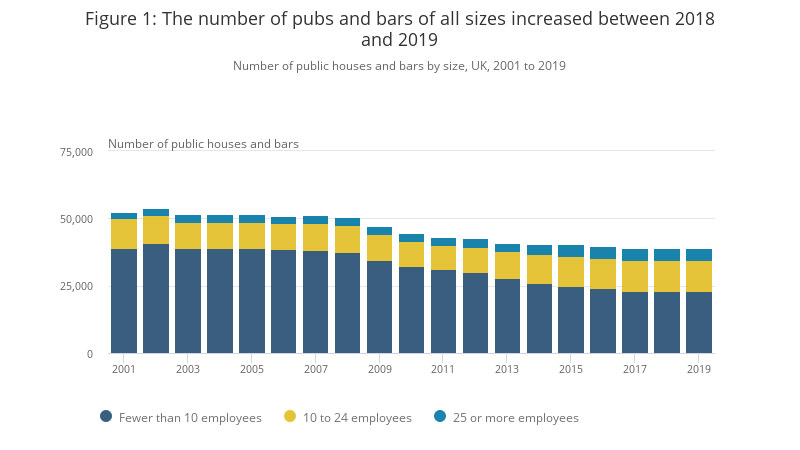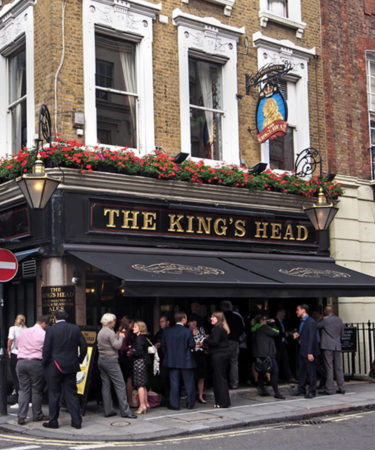While synonymous with British culture, the number of pubs in the U.K. has been steadily declining for more than a decade. In 2019, however, that trend reversed, and the number of pubs and bars in the country increased by 0.8 percent.
The (admittedly modest) increase was driven by food sales, according to the Office for National Statistics (ONS), which last week published a report on the state of the U.K. pubs and bars sector. There are now close to 40,000 pubs in the country.

The ONS data also shows that the nation’s pubs and bars now employ more people in food service occupations (i.e. chefs, cooks, waiters, waitresses, and kitchen and catering assistants) than bar staff.
“The tendency in pub and bar enterprises to employ more people serving food may be a reaction to changing consumer habits,” according to the report. “There is a long-term trend towards people spending more of their household income on eating out and less on drinking out.”
Despite a trend for pub closures over the past decade, the number of jobs in the sector has actually been increasing since 2011. Turnover in the pubs and bars sector has also been on the rise for the past five years. In 2017, the most recent year for which data is available, turnover reached its highest level since the end of 2008.
The British Beer & Pub Association (BBPA) said it “cautiously welcomed” the news.
